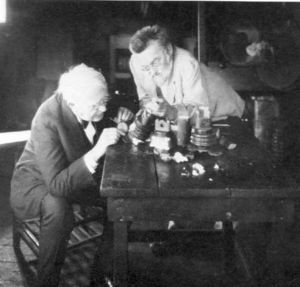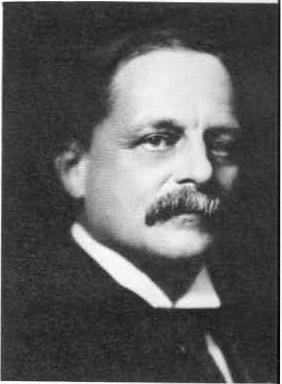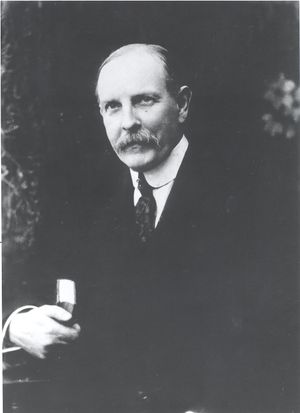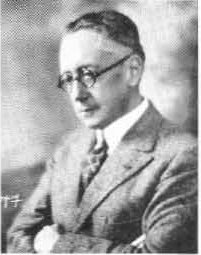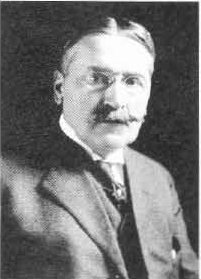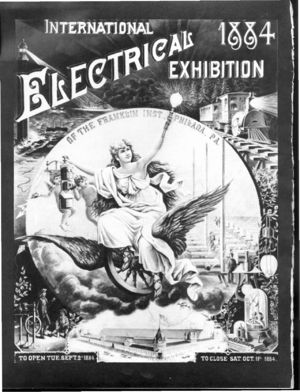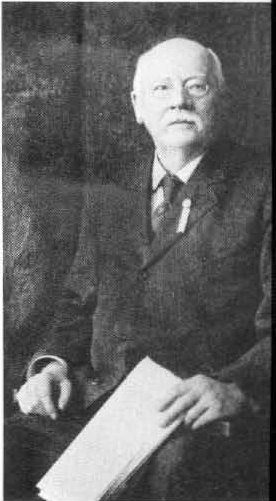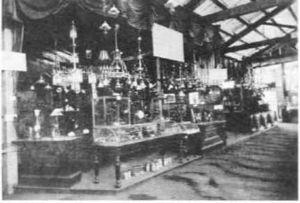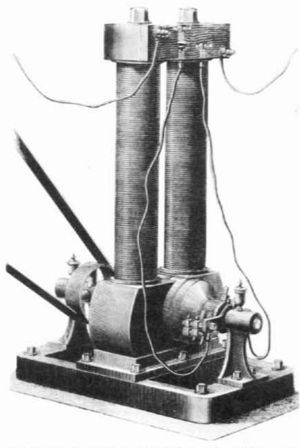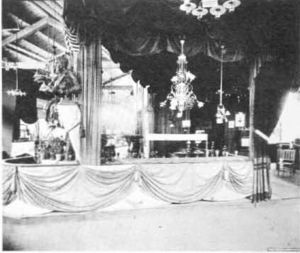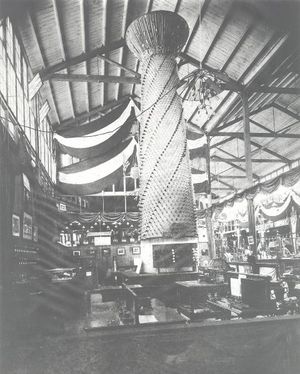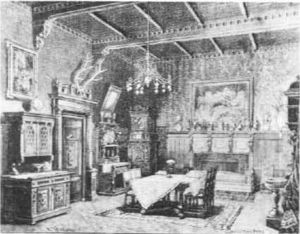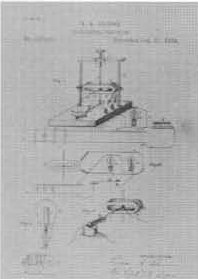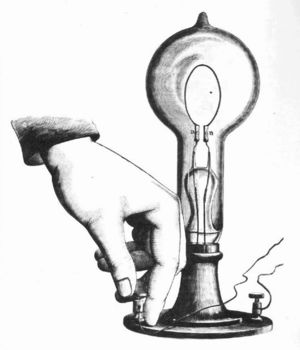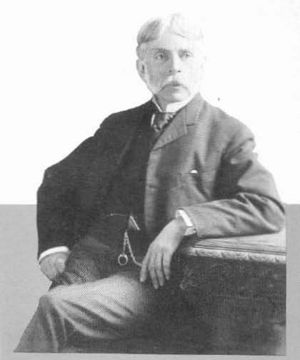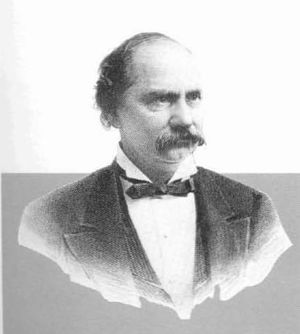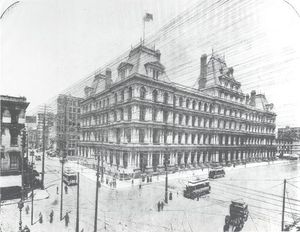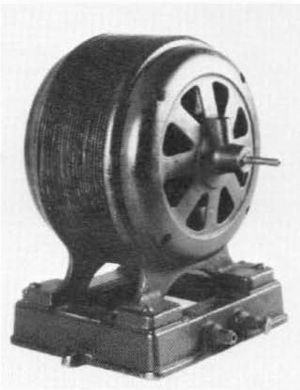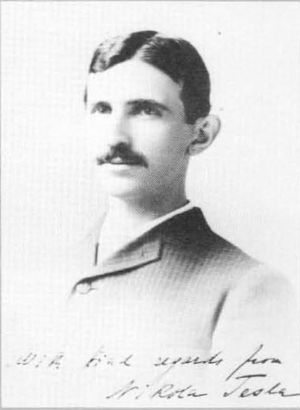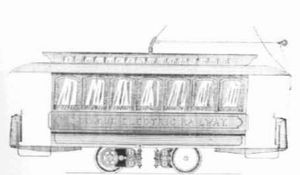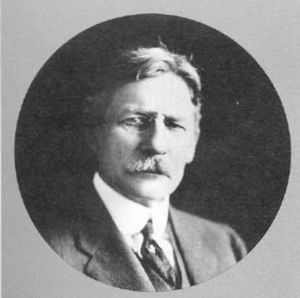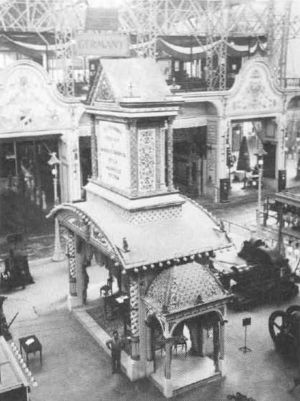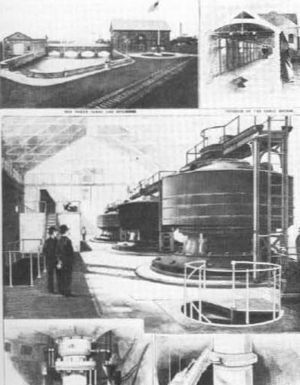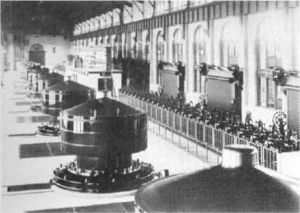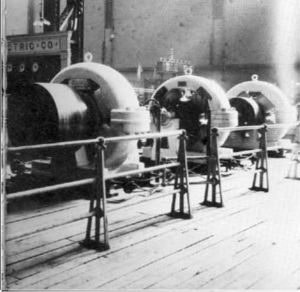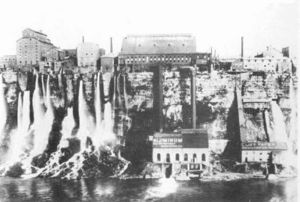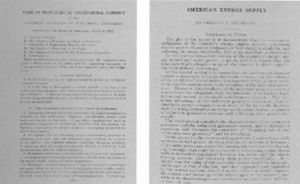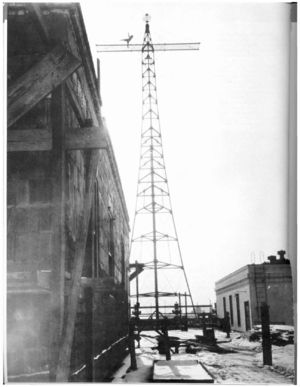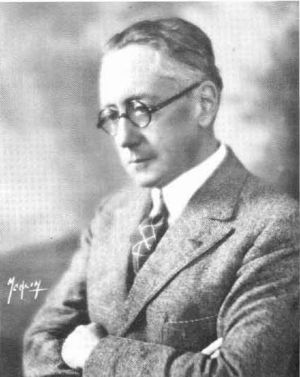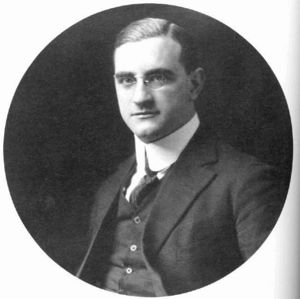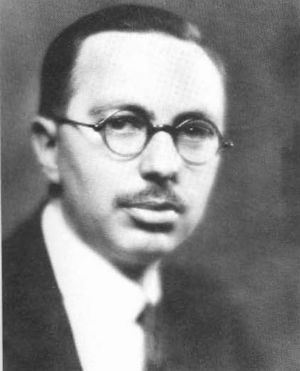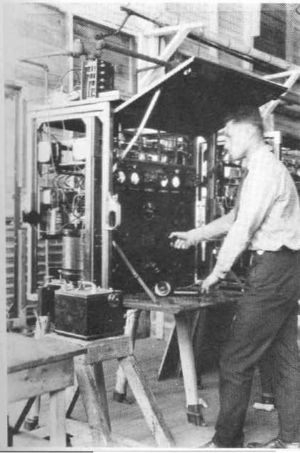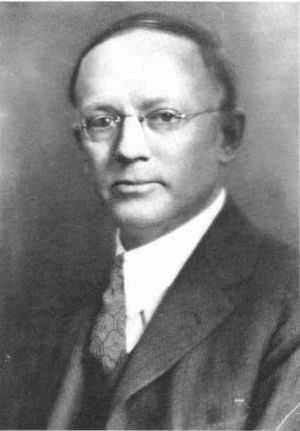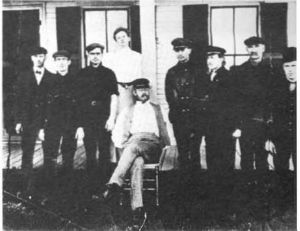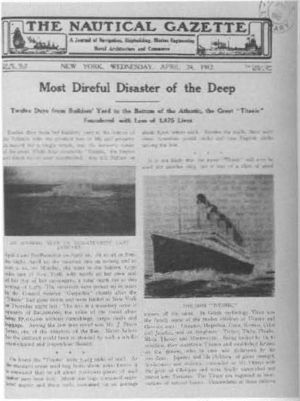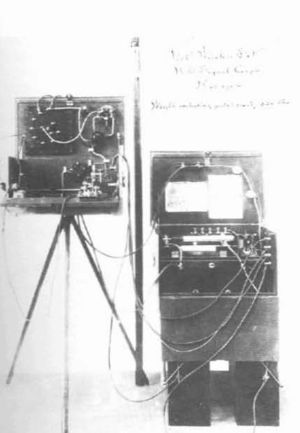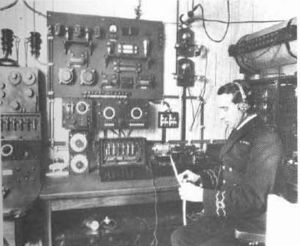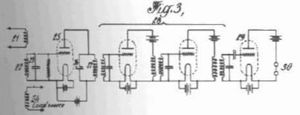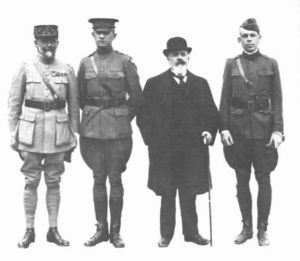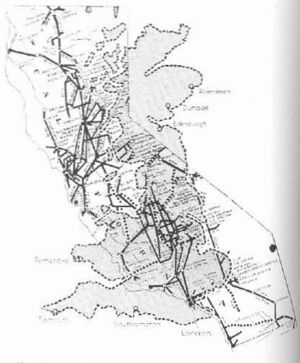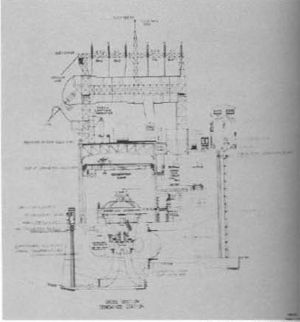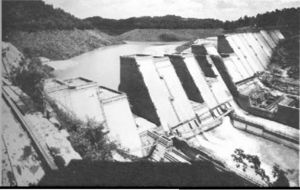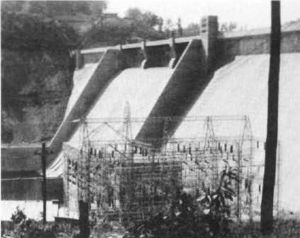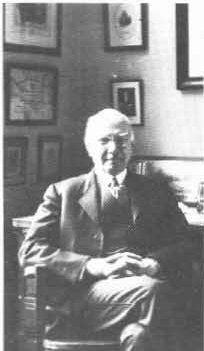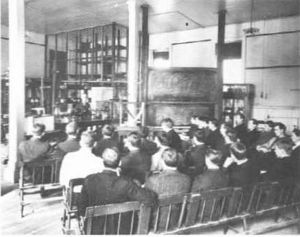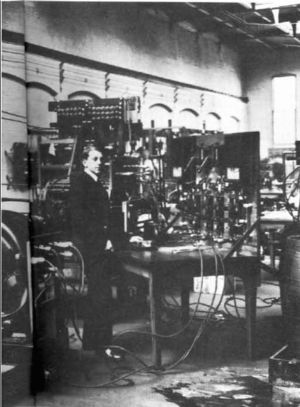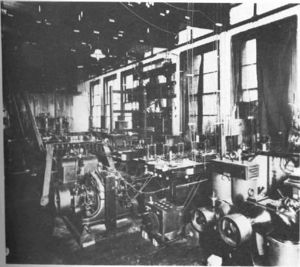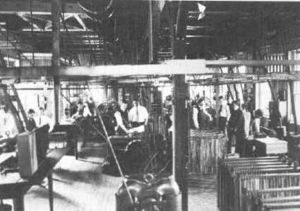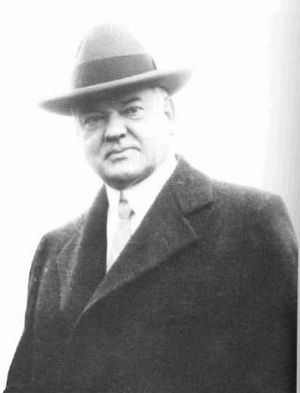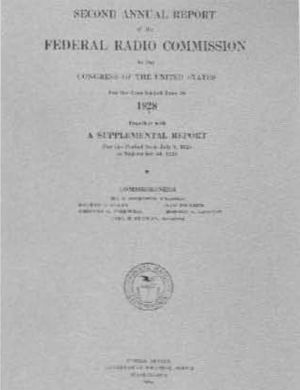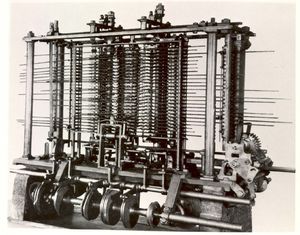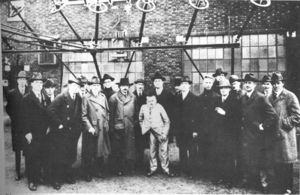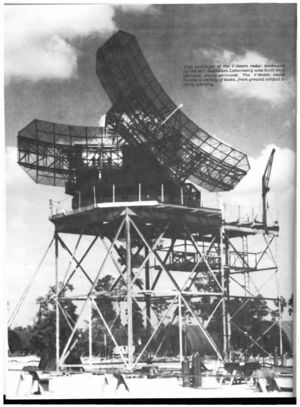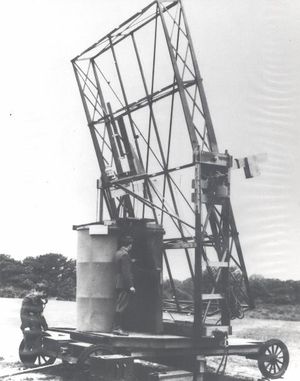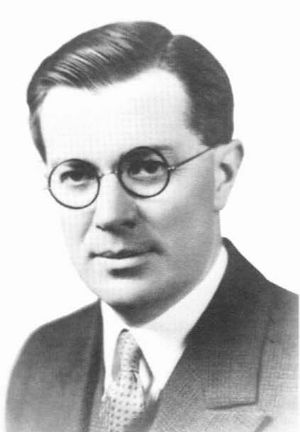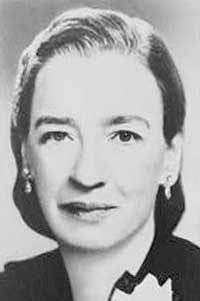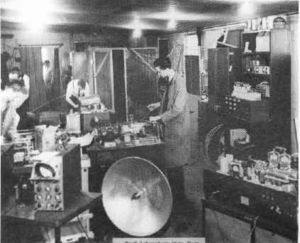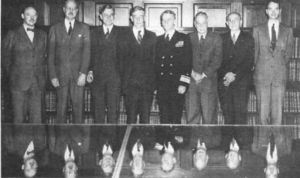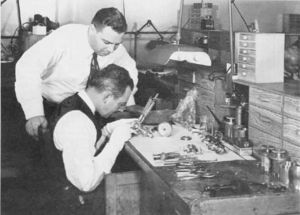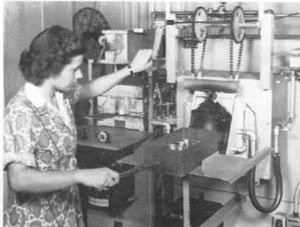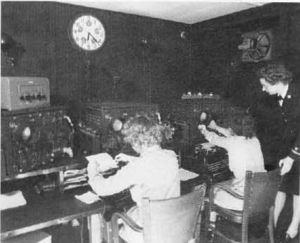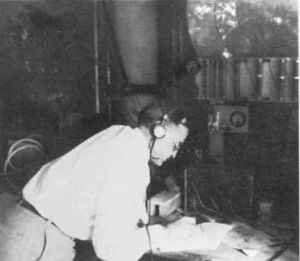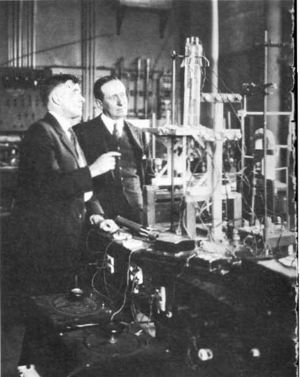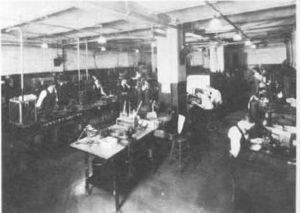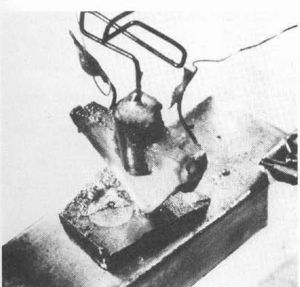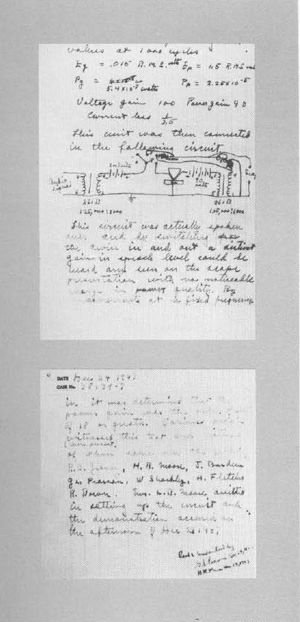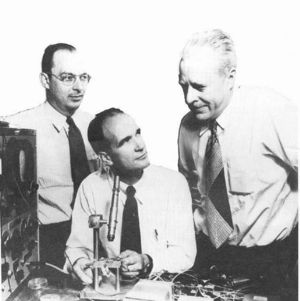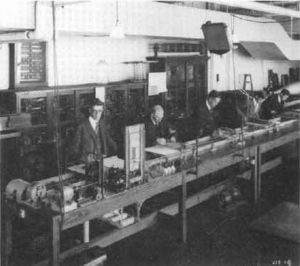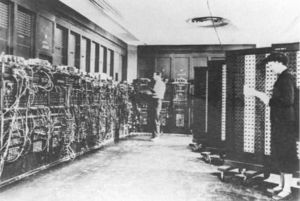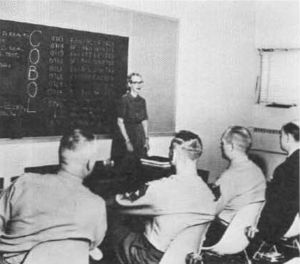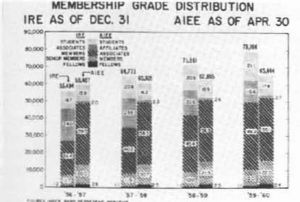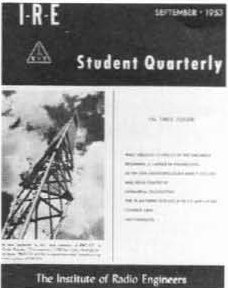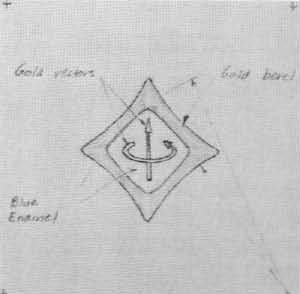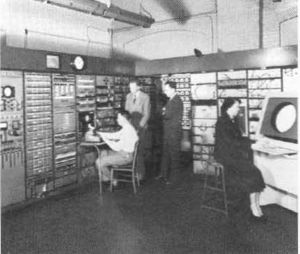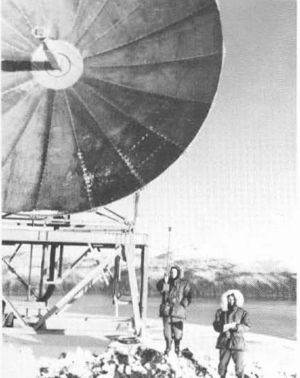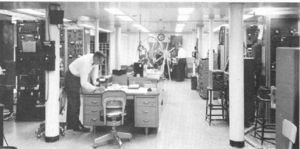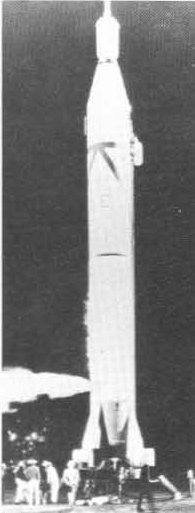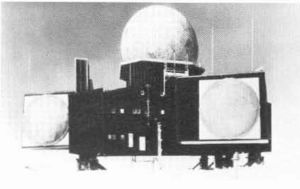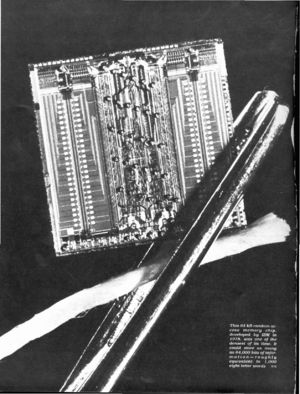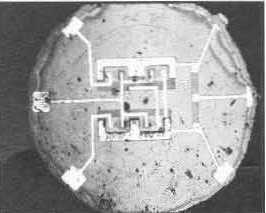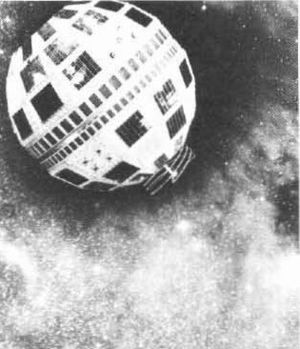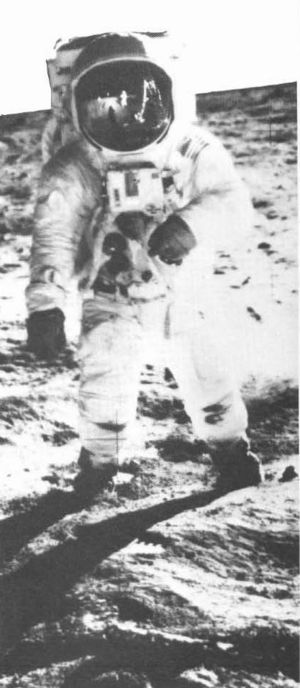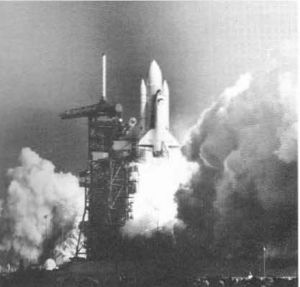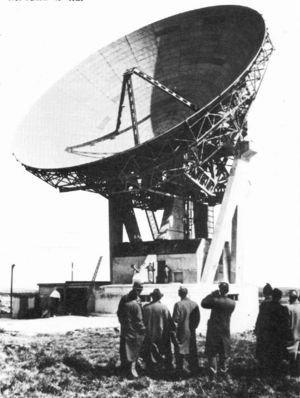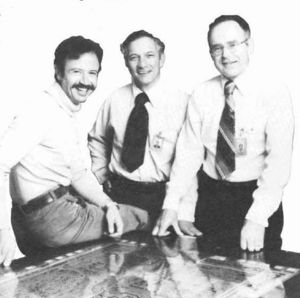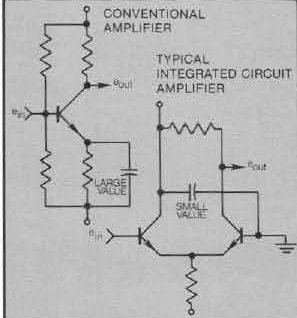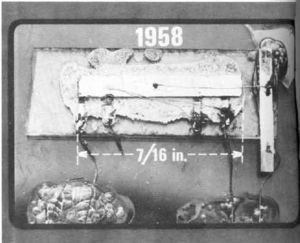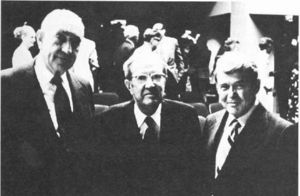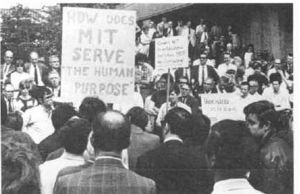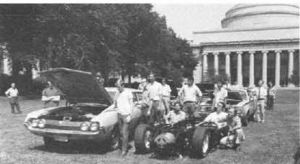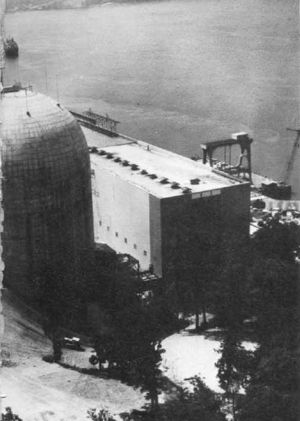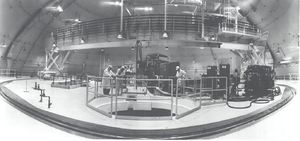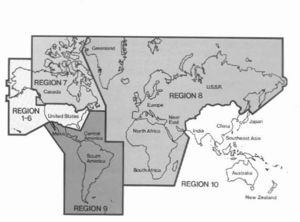Archives:A Century of Electricals
A Century of Electricals
Note: This article was originally published as an illustrated booklet by IEEE in 1984 as part of the IEEE centennial celebration.

The Electricals-electrical, electronics, and computer engineers-have produced the most dramatic technologies of our time. The world has changed because of the skill and imagination of these men and women.
Electric power, telephones, radio, television, and computers are just some of the products of electrical engineering. And we can expect the future to be as exciting and as challenging as the past.
As marvelous and surprising as electrical and electronics technologies are, we must not forget that they are all the creations of people, of individual men and women working together to make the most of their knowledge and training. The Electricals have come from all countries, all backgrounds, races, religions, and ethnic groupings. They are bound together by a common belief in the importance of learning about how the world-especially the electrical world-works, and of applying that learning to useful purposes.
One hundred years ago, the first people to call themselves electrical engineers joined together to foster their new profession. The civil engineers-builders of public works-and the mechanical engineers-designers of machinery and engines -already had societies to promote their common goals. In the 1880s, it was time for the electrical engineers to organize, for their technologies-the telegraph, the telephone, electric light and motors-were becoming increasingly important as they were getting more and more complex.
The Electricals, therefore, formed the American Institute of Electrical Engineers-the AIEE-in 1884. This organization was the forerunner of today's Institute of Electrical and Electronics Engineers-the IEEE. In one hundred years, the technologies and activities of electrical engineers have grown more diverse and complicated than the first Electricals could have ever imagined, affecting every area of our lives. The common bonds of the Electricals are still strong, however, and today a quarter-million of them make the IEEE the largest technical society in the world.
One hundred years ago, the Electricals represented a new style and a new direction for technology and the engineering profession. Their century of growth and change tells as exciting a story as the technologies of electrical and electronics engineering themselves. The pages that follow offer a hint of the full history of the Electricals - who they were, where they came from, how they worked, and what difference they made in the world. We hope this glimpse into that heritage will stimulate your own explorations into the world of the electrical engineers. The American Institute of Electrical Engineers (AIEE) was formed in the spring of 1884 to unite those involved in the "art of producing and utilizing electricity." The 1880s were a period of rapid change in electrical technology, and 1884 was a particularly good time for the formation of the new society, for in that year Americans were being called upon to display to all the world the great contributions they were making to the most exciting technology of the age.
International exhibitions were the 19th century's most spectacular means for showing off the achievements of a rapidly expanding industrial civilization. Besides large general exhibitions, such as London's Crystal Palace of 1851 or Philadelphia's Centennial of 1876, more specialized shows were popular means for spreading the word of the progress of fast-changing fields-most significantly, electricity. Paris in 1881, London in 1882, and Vienna in 1883 were sites of international electrical exhibitions. Now, in 1884, the Americans felt it was their turn, and they intended to make the most of it.
Philadelphia's Franklin Institute was typically the organizer of such American efforts, so its key role in organizing and hosting the International Electrical Exhibition of 1884 seemed quite natural. In addition to the displays of 196 commercial exhibitors, the formation of a special library of electricity and magnetism, and a historical exhibit that included the first Morse telegraph instrument and devices that had been used by Benjamin Franklin, the Exhibition events included the convening of a "National Conference of Electricians:' authorized and funded to the amount of $7.500 by the federal government, and the annual meeting of the American Association for the Advancement of Science. Though high import tariffs on foreign electrical products discouraged European exhibitors, an international flavor was still present Invitations were sent to members of the British Association to come to Philadelphia following their own meeting in Montreal, and William Thomson, the eminent British physicist and electrical engineer, was selected as vice-president of the Electrical Commission arranging the National Conference.
Both the Commission and the Conference were, however, made up not of electrical engineers but of physicists. Before 1884, only the academic physicists in America had the public recognition and authority to speak about and for the new electrical technology. It was this slate of affairs that motivated a New York-based group of practical electrical engineers to call, in April 1884, for a "national electrical society" to receive the foreign "electrical savants, engineers and manufacturers" who were expected in Philadelphia. The American Institute of Electrical Engineers was formally established on May 13, 1884, and scheduled its first technical meeting for October 7 and 8 at the Electrical Exhibition. The engineers' efforts to organize themselves were an unqualified success. It was they who went on to become the creators and spokesmen of the new technology.
The organization of the electrical engineering profession in America in the 1880s was no coincidence. It was in that decade that electrical technology finally emerged from the confines of specialized applications that had little direct impact on most people, to be seen as a force for change everywhere. This was especially apparent at the Philadelphia exhibition that gave impetus to the AIEE's birth in 1884.
For nearly a half century, the application of electricity meant telegraphy. It is easy now to forget what a wonderful thing the telegraph was to people in the 19th century, so crude and simple does it seem next to the electrical and electronic marvels of a later day. One must think back to what it meant to introduce instantaneous communication between distant points into a society that had never known anything like it. Although commonplace by the 1880s, the telegraph had not yet lost its fascination and was the only electrical technology known or understood by many in Philadelphia.
The real excitement, however, came from new electrical inventions, some of which had begun their rapid spread across the land into households, shops, factories, and everywhere else that people sought the increased comforts and productivity promised by the most modern technology. The electric light was, of course, the most visible of these. The arc light, with its glaring, unsurpassed brightness, had been available for about a decade, but was in fact still only beginning its spread into use in public places, such as streets, squares, large stores, and theaters. The incandescent lamp, characterized by its soft, yellow glow that seemed so superior to gas, was less than 5 years old, although the efforts of Thomas Edison and a half-dozen rivals were pressing the new light, and the central power system that made it work, into service everywhere.
Hard on the heels of the electric light were the attempts of inventors and entrepreneurs to find other applications for the central electrical system. Already, small devices such as sewing machines, pumps, and hoists had been successfully linked with electric motors to make work safer, more convenient, and more productive. A multitude of similar applications seemed just around the corner, and Philadelphia provided a wonderful opportunity for showing them off. And on the horizon, a number of inventors showed, were even greater marvels, such as the application of electric power to the always difficult problem of urban transport.
The present seemed wonderful to engineer and citizen alike during those bright autumn days in Philadelphia, and the future was so full of possibilities that it was hard even to conceive what they might be. It would have taken foresight indeed for anyone to recognize the significance of one odd little item displayed in a corner of the hall's largest single exhibit, that belonging to Thomas Edison. There, labeled simply as "apparatus showing conductivity of continuous currents through high vacuo” was Edison's "Tri-Polar Incandescent Lamp:' showing off the "Edison Effect”-the harbinger of electronics.
The organizers of the AIEE appealed to a broad audience when they issued their call for the new society in the spring of 1884: "Persons who are interested in our electrical, scientific, educational, manufacturing, telegraphic, telephonic, and like concerns as well as the users of electrical appliances generally, will find it to their advantage, personally and collectively, to establish, work for, and generally aid our proposed society."
"It is proposed,” the call went on to say, "to make electrical engineers, electricians, instructors in schools and colleges, inventors and manufacturers of electrical apparatus, officers of telegraph, telephone, electric light, burglar alarm, district messenger, electric time, and of all companies based upon electrical inventions as well as all who are inclined to support the organization for the common interest, eligible to membership.”
For the most part, in the 188Os, this meant telegraphers and those associated with them. The telegraph was the primary manifestation of electrical technology in the 19th century, and even those whose activities had spread further afield, such as Thomas Edison, had usually gotten their start at the telegraph key.
The telegraphers were prominent in the list of founding members of the AIEE, and the new organization paid further homage to the industry when it elected Norvin Green, head of the Western Union Telegraph Company, its first president.
Like today, a century ago electrical engineering was an exciting and rapidly changing technology. Telegraphy had already shown how important electrical technology could be to society and had attracted many an ambitious young man to the ranks of operators and electricians. It was the newer technologies of light and power, however, that suggested the extent of possibilities for the future. These new technologies required new knowledge and new skills, and from these needs emerged the modem electrical engineer.
The telegraphers who were so prominent in the establishment of the electrical engineering profession were largely practical men, whose training had been at the telegraph key, the workbench, and the Jines and cables that criss-crossed the country and the seas. Their schooling, where it existed, was often in a field far removed from their profession. This was not to be adequate for the advancement of the newer applications of electricity. The construction of dynamos, the design of central power stations and distribution systems, the making of light bulbs, motors, and a host of auxiliary devices all required a deeper understanding of engineering fundamentals and of electricity itself. The new leaders of the electrical engineering profession would be men whose practical experience was augmented by theoretical training and a concern for establishing the basic principles of their field.
As the complexity and scale of the new electrical technology continued their accelerating growth at the close of the 19th century, so did electricity's visibility and impact. Nowhere was this more evident than at the two great, though very different, showplaces of American engineering in the 1890s-Chicago and Niagara.
The World's Columbian Exposition at Chicago and the power station constructed at Niagara Falls, New York, were the great stages for displaying how far the electrical engineering profession had come in one short decade. On these stages were acted out not only the triumphs of electrical technology but also the controversies and struggles that accompanied explosive growth.
So grand was the World's Fair that opened in Chicago to celebrate the 400th anniversary of Columbus's discovery of America that no one minded that it was a year late. It was the first fair where electricity was given its own building, but the impact of the new technology was in fact spread throughout the "White City" that rose on the shores of Lake Michigan. The lighting, in particular, made an enormous impression on the millions of visitors who poured in from across America and around the world. The 8,000 arc lights and 130,000 incandescent lamps that the Westinghouse Company installed throughout the grounds represented a technical triumph for a manufacturer whom many still considered an upstart in the electric light and power industry. More important than the size of the effort, however, was that it demonstrated the practicality of alternating current systems, which thereafter rapidly eclipsed the direct current technology of Edison and others.
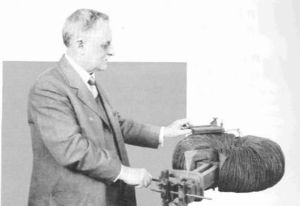
Just as in Philadelphia in 1884, the Chicago exhibition was seen as a good setting for an electrical conference. The resulting Chicago International Electrical Congress was testimony to the growing prestige of American electrical engineering, for this was a truly international meeting that made great strides in establishing the world's standards for fundamental electrical units. Particularly gratifying to the Americans was the adoption of the "henry" as the international unit of inductance-a proposal that had been advanced by the AIEE to honor one of the founders of electrical science in America.
Niagara Falls represented a showplace of a very different sort. Here electrical engineers were confronted with one of the great technical challenges of the age-how to harness the enormous power latent in Niagara's thundering waters and make it available for useful work. Years of study and heated debate preceded the startup of the first Niagara Falls Power Station in the summer of 1895, as engineers and financiers argued about whether electricity could be relied on to transmit large amounts of power the 20 miles to Buffalo and, if so, whether it should be direct or alternating current. The success of the giant polyphase alternating current generators made clear the directions that electric power technology would take in the new century, and the attraction of novel industries that consumed great amounts of electricity, such as aluminum and other electrochemical manufacturers, showed the vast potential for growth and change that electricity held for the future.
The men who set out to establish electrical engineering as a respected profession were aware that their field posed special opportunities and problems. The new technologies of which they were masters presented technical challenges that needed to be addressed by the profession lest progress be stymied by narrow commercial interests. Many engineers also recognized that public concern about the use and safety of electrical technology reflected on their profession and themselves. Finally, there were those who felt that the social responsibilities of a true profession went beyond purely technical issues to include ethical and political concerns as well. There could be seen in these first decades, therefore, the same variety of issues and viewpoints that would characterize the electrical engineering community for the next century.
By the time the American electrical engineers took up the problem, the resolution of technical standards and terminology was a widely recognized responsibility of an organized engineering profession. The AIEE's first serious effort in this regard was the appointment of a committee on "units and standards" in June, 1891. Soon afterwards, another committee was formed to make recommendations for a "standard wiring table" to guide engineers in specifying wiring requirements. The overwhelming importance of standardization quickly became apparent in the growing electrical industry, where the intensity of competition led to confusion and conflict in technical specifications, test standards, and even terminology. The engineers recognized an opportunity to rise above commercial considerations by establishing themselves as the authorities for standardization. The AIEE appointed its permanent Committee on Standardization in March, 1898, and from that time, in conjunction with other engineering societies and international groups, the engineers have set the standards for electrical technology and practice.
The extent to which the responsibilities of engineers, either as individuals or as organized professionals, extend beyond purely technical concerns was a matter for debate from the earliest years of the AIEE. The conflicts that arise due to the engineer's position as both a professional and, frequently, an employee have always been a source of concern, perhaps best illustrated by the experience of Charles Steinmetz.
Not only was Steinmetz a brilliant engineer, the creator of many of the most important analytical methods for designing and describing electric power devices and systems, but he was also a man deeply concerned about the proper role of the professional engineer in society. As an employee of a very large company (General Electric). Steinmetz was well aware of the problems that the corporate engineer experienced in defining his loyalties and responsibilities. In 1907, conflict over these problems prevented the AIEE from adopting a Code of Ethics for its members. When, five years later, the Institute resolved to try again to develop an acceptable Code. Steinmetz's was an influential voice, speaking out for the engineer's obligation to commit himself to the best possible technical practice while at the same time recognizing that his ultimate loyalty was to his client or employer. Above all, Steinmetz spoke out for his belief that engineers "must be more than mere engineering machines,” a belief that still motivates many of the creators of modern electrical technology.
The dawn of the present century saw the birth of several technologies that were to be revolutionary in their impact. The most exciting of these was radio, or, as it was generally called at the time, "wireless." No other technology would seem to so thoroughly obliterate the barriers of distance in human communication or to bring individuals together with such immediacy and spontaneity. And seldom had there emerged an activity that seemed so mysterious and almost magical to most of the population-setting apart its practitioners as a special and privileged breed. Radio was mysterious not only to the layman, but also to many engineers and technically informed individuals.
The mystery lay largely in radio's application of principles and phenomena only recently identified by physicists and engineers working at the frontiers of their specialties. The existence of electromagnetic waves that traveled like light had been predicted by the brilliant physicist James Clerk Maxwell in the 1860s and proven by the young German Heinrich Hertz in the 1880s. The possible use of these waves for communicating through space without wires occurred to many. The first practical steps to making radio useful are generally attributed to Oliver Lodge in England, Guglielmo Marconi in Italy, and Aleksandr Popov in Russia. Marconi's broadcast of Morse code across the Atlantic in 1901 first showed to the world just what enormous potential radio had for changing the whole concept of long-distance communication. The next few years saw feverish activity everywhere as men tried to translate the achievements of the pioneers into the foundations of a practical technology.
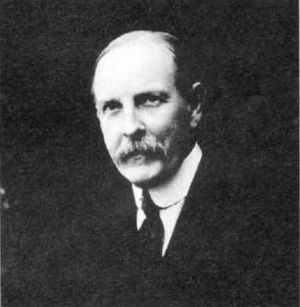
By 1912, radio technology had attracted a small number of dedicated individuals who identified their own future with the progress of their chosen field. Some of these had organized themselves into small, localized societies, but it was clear to many that a broader vision was needed if radio practitioners were to achieve the recognition and respect of technical professionals. It was with such a vision in mind that representatives of two of these local societies met in New York City in May, 1912, to form the Institute of Radio Engineers. The IRE was to be an international society dedicated to the highest professional standards and to the advancement of the theory and practice of radio technology.
The importance of radio, however, lay not simply in its expansion of the means for human communication over distances, but also in its exploitation and expansion of very novel scientific and technical capabilities, for, as the century progressed, radio would give rise to the 20th century's most revolutionary technology of all-electronics.
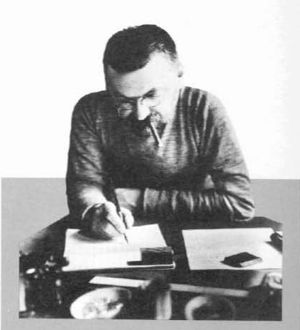
Radio was regarded as a marvelous technology by most people who came in contact with it In its early years, however, it had a special fascination for the younger generation, those just beginning to make the choices that would determine their careers and the vehicles for their ambition. The extent to which radio was indeed a technology for the young was reflected in the radio clubs that sprang up in cities and towns everywhere, in the popular literature that was published to appeal to young radio buffs, and in the men who gave the impetus to the formation and growth of the Institute of Radio Engineers.
In 1912, the year of the IRE's founding, John V.L. Hogan was only 22 and had already been working with radio inventor Reginald Fessenden for over two years; Alfred Goldsmith was 24 and already had the experience to serve as a radio consultant for the U.S. Department of Justice; Robert Marriott, the IRE's first president, had reached the ripe age of 33, and had more than ten years of radio experience under his belt: and David Sarnoff, just 21, had been working for the American Marconi Company since he had been 15. All of this youth was very much within radio's brief tradition-after all, Marconi himself had been only 21 when he announced to the world in 1895 that he could transmit wireless messages over miles of open country. Not all of the leaders of the radio profession in its early years were quite so youthful; John Stone Stone, one of the key architects of the IRE, was 43 in 1912, and the presidency of the organization was usually given to an older individual in recognition of his age and experience. Nonetheless, the dynamism of the new profession clearly owed much to the youthful ambition of its most active members.
To most people in the early years of the 20th century, radio was a wonderful new invention, but its usefulness and importance for the world of affairs was unclear. At just the time that the radio engineers were organizing themselves, however, there occurred two events that starkly demonstrated just how indispensable the world was to find the new technology. In so doing, they also provided a glimpse at the pivotal role that the new breed of engineers was to play in the turbulent century ahead. One month before the radio engineers in New York met together to form the IRE, one of history's greatest maritime disasters focused attention on the new capabilities that radio had given the world, both for reporting events as they happened and for affecting them. On the night of April 14, 1912, the White Star liner Titanic, with more than 2200 aboard, collided with an iceberg in the North Atlantic and rapidly began to sink. The ship's wireless operator sent out a distress call, which was not received by some nearby ships because their receiving sets were not in operation at the time, but which other ships picked up and relayed to stations on the American mainland. The saving of more than 700 lives was attributed to the work of wireless operators that night. The entire world was caught up in the event by the activity of the mainland operators who passed on the news of both tragedy and survival. Only a few months later, governments everywhere began mandating radio operation aboard ships at sea-radio and its engineers thus became indispensable to world commerce. If the pursuits of peace were not enough to demonstrate radio's key place in the modern world, then the waging of war would bring the message home with a dreadful finality. When the guns of August began sounding in 1914, the European powers had already begun supplying their armies and navies with the most advanced communications equipment, for the importance of wireless signaling that could be set up instantly anywhere in the field or on the seas was obvious to every strategist. Learning how to use the new tool to best advantage took some time, but the key role to be played by the new devices and the men who made them was recognized early. And when the new radio technology was wedded to the equally new technology of aviation, the whole face of warfare began to change.
The impact of the First World War on radio engineers and engineering was enormous. The needs of war pushed the technology ahead at a pace barely thinkable for peacetime. Radio facilities were placed under direct government control and brilliant young men like Edwin Howard Armstrong were pressed into military service. To develop a radio technology that could be readily used by soldiers and seamen required the rapid advancement of radiotelephony, which began replacing coded wireless everywhere.
Such needs generated many technical achievements, of which Armstrong's superheterodyne circuit was perhaps the most brilliant. Just as important, however, was the war's role in exposing much of the population that had been recruited into wartime service to the wonders of radio, thus building the foundations for the boom that was to come. The interaction between military needs and engineering advancement was to be a pattern repeated through the century, with consequences that both the engineers and the public would have to learn to live with. When the 20th century began, electricity was still to most people a very distant and unfamiliar thing, and its applications touched relatively few directly. America, like most of the rest of the world, was largely a country of small towns, villages, and farms, and electric light and power was seldom encountered in such settings. The great work of electrical engineers in the first decades of the century was the bringing of their miracles to the mass of people-to those outside the big cities, to those of average economic and social station. In so doing, the electrical engineers became primary architects of 20th-century life.
In the first decades after 1900, the electric power industry continued its rapid growth. In 1902 the amount of electric power available per person in the United States was about 75 kW; twenty years later this figure was 565 kW per person. The pace of expansion slowed in the 1920s, for the technical challenges of carrying electric power beyond metropolitan areas were complex and expensive. It was no longer possible to sustain growth by simply building on to existing systems-electrical engineers began to think in terms of much larger, extended systems, a concept sometimes referred to as "Super Power." Such systems, which were proposed to bring electricity to large areas, even entire states, raised important social, economic, and political issues as well as technical ones, and the electrical engineers were caught up in the debates over how best to extend access to the new technology to everyone. It became widely recognized, in societies as divergent as the United States and the Soviet Union, that "electrification" was to be the key to national development in the 20th century and that electrical engineering was the profession holding that key.
In the 1920s, only a few saw any need to change the way in which electric power was being extended to the people, The Great Depression of the 1930s changed attitudes, however, as politicians and the public sought ways to alleviate the suffering caused in some areas by the economic calamity. The most important single project to result from this was the creation in 1933 of the Tennessee Valley Authority, The TVA was created to administer a multipurpose river project, with responsibility for flood control, fertilizer production, waterway construction, and hydroelectric power generation. It was in the generation and distribution of power that TVA was to make an international reputation for itself, and the electrical engineers who designed and operated TVA's power system became the pioneers of large power systems of the future.
The first electrical engineers had very mixed backgrounds. Some had purely practical training, some had formal education in fields far removed from engineering, and a number were schooled in allied fields such as mechanical engineering or physics. The leaders of the profession, however, were quick to recognize that a new field would require a new kind of education. The first college-level electrical engineering programs were thus established at the same time that the engineers began organizing themselves in the 1880s, and their rapid growth in following decades became one of the sources of strength and unity for the profession.
When the Massachusetts Institute of Technology in Boston established America's first electrical engineering program in 1882, it was attached to the physics department. The curriculum reflected the close ties to physics, and included generous amounts of mechanical engineering and the liberal arts. There was actually little formal study of "electrical engineering" as such, for the subject hardly existed yet. Textbooks, laboratory procedures, trained teachers, and all the other apparatus of an academic subject had to be created. To some, this was one of the most important tasks of the electrical engineers in the twentieth century – one that was carried out with enormous success.
From the beginning, electrical engineering attracted many of the brightest and most ambitious engineering students-by 1892. For example, the field claimed 27 percent of MIT's graduates. For the first several decades, the electrical engineering curriculum was built almost exclusively around power engineering, for the ever expanding power industry was the chief source of demand for engineers. Furthermore the principles and theory needed for effectively teaching the subject developed rapidly, thanks to the work of power engineers like Charles Steinmetz and Elihu Thomson, who distinguished themselves as educators as well as inventors and researchers. The greatest influence in electrical engineering education was, however, wielded by men who devoted their entire careers to working with students and fellow teachers, men like Dugald Jackson or Harris J. Ryan.
After World War I. the importance of radio and of further possible applications of vacuum tubes could not be ignored by even the most power-oriented electrical engineering department. The "communications option" became a more and more common feature in programs everywhere. Other efforts to make engineering education more responsive to the changing technology and needs of industry included the establishment of "cooperative" programs, the most famous of which was that begun at MIT in the 1920s. These saw faculty and students working shoulder to shoulder with company engineers, dealing directly with the practical problems of industry. Although individual professors might make important contributions to electrical technology-the invention of the loading coil by Columbia's Michael Pupin was a key to the expansion of telephone technology-most engineering educators in the early 20th century thought little about research or publication. They sought to make their contribution through teaching and left the creation of new technologies to industry's laboratories. This would change dramatically by mid-century.
The turbulent first decades of the 20th century, marked by global war, unprecedented prosperity, and then calamitous depression, saw engineers assuming new roles in society. The enormous impact that the work of the engineer had on the lives and affairs of individuals and nations alike was obvious to all. There were some, in fact, who believed that the engineer's responsibilities extended to the management of a more efficient and rational society, that "technocrats" rather than politicians should be looked to as the natural leaders of a complex modern world. Although such views in their extreme form were held by a relative few, they stimulated a wide-ranging debate over the true duties and obligations of the engineer.
In the years after World War I, the relationship between electrical engineers and government rapidly came to be an important issue for many in the profession. The tremendous importance of radio that the war had made clear to all also made clear the need for strong, technically sophisticated government regulation. When the United States entered the war in 1917, the federal government quickly acted to take over all wireless stations in the country. The radio spectrum was obviously too valuable a resource to be left uncontrolled in times of national emergency or unregulated in times of peace. The growth of broadcasting in the 1920s made the need for concerted government action increasingly urgent, and Secretary of Commerce Herbert Hoover called four National Radio Conferences during the decade to bring engineers and politicians together to address both technical and policy issues.
Finally, the Federal Radio Commission was established in 1928, and a long tradition of close cooperation between radio engineers and government regulators began. Radio was not the only area in which engineers found themselves dealing directly with questions concerning the public interest and the engineer's responsibilities toward it. In almost all areas of electrical technology, the rapid expansion and increasing importance of the engineer's work made his activities a matter for public, and hence government, concern. From the beginning of the electric power and telecommunications industries, local government exerted authority over utility construction and competition. In some places, political involvement was limited to rate setting and franchise control. but in other jurisdictions, electrical technology was thought to be so essential that governments took on the complete responsibility for providing power and communications, thus becoming major employers of electrical engineers. The TVA was only the most famous example of government initiative in this area, for local governments in many areas of the country also provided service, and outside of the USA government control of power and telecommunications was the norm.
The increasing complexity of 20th-century technology and the increasing reliance that everyone was forced to place on it put special burdens on electrical engineers. Not only were they to pursue the ever more rapid advancement of their field and the fulfillment of the needs of employers and clients, but they had to be increasingly conscious of their responsibilities to society and, in the dangerous world of the later 20th century, to humanity itself.
No single event had a greater effect on electrical engineering than the Second World War. The years from 1939 to 1945 saw a radical change in the way that the world perceived electrical engineers and in how they perceived themselves. Their field was transformed from a specialty with well-defined applications, primarily in power and communications, into the source for the most powerful and pervasive technologies of the 20th century. As the century matured, as global war gave way to cold war, and as allies became enemies and former foes became friends, the expansion of the electrical and electronics technologies became one of the hallmarks of the age-shaped by as well as shaping history.
In the heat of war, radio engineering was transformed into electronics, and the radio engineers were similarly transformed. Theirs became a technology to harness the most advanced and subtle knowledge of the very parts of matter itself, manipulating electrons and electromagnetic waves almost at will in an effort not simply to communicate, but to detect, control, and even as some saw it, think. The tremendous pressures of wartime development forged a new relationship between engineers and physical scientists. More and more the realms and tasks of both overlapped, for advances in electronics made use of the latest findings, theories, and techniques of physicists and chemists, while scientific discovery came to rely progressively more on the instrumentation created by engineers. This merging of science and technology was one of the war's greatest legacies, and has continued to shape our times.
The enormous demands that war put on the world's economies brought home another lesson about electrical technology-the indispensable and strategic place of electric power. World War II marked the final passage of electric power to the status of necessity, not only swelling the general industrial consumption of power, but also highlighting specialized uses of electricity, such as the production of aluminum and explosives, that were critical to the pursuit of war. In Europe, the targeting of power plants and dams by both Allied and Axis bombers provided gruesome proof of electricity's central place in modern warfare. The harnessing of the technology of peace to the needs of war provided prelude to a fine irony, however, for the most dramatic development in electric power production in the coming decades was the effort to transform the energy in the war's most awful weapon, the atomic bomb, into a servant of power generation.
The postwar years were ones of growth and change, accompanied by tensions and conflicts both within the engineering community and in society at large. Again, war was followed by unprecedented prosperity, but this time it was in a world where the dangers and possible consequences of international conflict were distressingly obvious. The efforts of engineers were thus divided between the creation of a consumer society, powered by electricity and tuned in by electronics, and the demands of national and international security, with their heavy drain on both resources and manpower. Alongside this division was another, as the anomaly of an engineering community split between the AIEE and the IRE became less and less justifiable. In the coming decades, this problem was resolved, as engineers everywhere recognized their common interests.
At least since Archimedes, engineers and scientists have been pressed into service in time of national danger, but never on such a scale as during World War II or with such enormous consequences. From the day that Nazi tanks rolled into Poland in September, 1939, it was clear to everyone that this was to be a war of technology, and the nation that could create and put to use the most advanced science and engineering would have the upper hand.
New circumstances required new forms of organization. During World War It the United States relied on such agencies as the Naval Consulting Board, headed by Thomas Edison, which spent much of its effort simply reviewing ideas for inventions sent in from around the country. Such it mechanism was clearly inadequate for the crisis of total war. Electrical engineers were prominent in creating the new tools required to mobilize the nation's scientific and technical manpower. The most significant of these tools was the Office of Scientific Research and Development, headed by former MIT electrical engineering professor Vannevar Bush. The OSRD was to spearhead much of the war's engineering developments, including the perfecting of sonar for submarine detection, the proximity fuze to increase the effectiveness of ordnance, and shortwave radar, which revolutionized air defense.
Most of the scientific and engineering research carried out during the war was not carried out by the government itself, but in academic and industrial laboratories by people recruited from all technical fields. Numerous special laboratories were set up, and it was in these institutions that many electrical engineers learned how the war was transforming their field. The best engineers of the day were chosen to organize and run the labs, as, for example, Stanford's Frederick Terman, who was called upon to head, the Radio Research Laboratory at Harvard, which had the prime responsibility for electronic countermeasures ("jamming").
The largest and most prominent of the OSRD-sponsored labs was set up for the development of effective and reliable radar systems. Named the Radiation Laboratory to suggest to the outside world that it was concerned with supposedly more innocent problems in physics, the establishment eventually employed some 4,000 people spread throughout 15 acres of floor space on and around the campus of MIT. At its height, the "Rad Lab" employed fully one fifth of the physicists in the United States, plus hundreds of electrical engineers from both academe and industry. More money - an estimated $2.5 billion-was spent on radar research, development, and production than was consumed by the work on the atomic bomb, and the technical fruits, although not as spectacular, were from an engineering point of view every bit as impressive.
Working closely with British researchers, the laboratory turned out a whole series of sophisticated microwave devices, laying the foundations for a large family of radar and navigation instruments, which were key parts of the war effort and which became mainstays of postwar electronics technology. Above all, the close relationship forged between physicists and engineers under the stress of war gave a glimpse of the ever more complex research environment of the engineer in the late twentieth century.
The world that electrical engineers faced at the end of World War II was a very different one from that of the 1930s, but the underlying agencies for change were institutions that had been in the making for many years. The most important of these were the industrial research laboratories that a number of the largest electrical technology firms had set up in the first decades of the century. In such laboratories, engineers were brought together with scientists, technicians, and material resources, all organized in an effort to improve the "state of the art" or to create breakthroughs that would extend technological and commercial opportunities into new areas.
The fruitfulness (and profitability) of such efforts was amply demonstrated very early. The laboratory that General Electric’s Willis Whitney set up in Schenectady, N. Y., in 1900 was a model for many to follow, and its productivity was a persuasive advertisement for industrial "R & D." William Coolidge's process for making ductile tungsten lamp filaments and Irving Langmuir's improved light bulbs and vacuum tubes were sources not only of profit but of justifiable pride for the G.E. engineers and managers. The policy of trying to put technological innovation on a systematic basis was seen as a resounding success, one to be followed on a large or a small scale by many others.
No one, however, made such good use of industrial research as the American Telephone and Telegraph Company. In 1907, AT&T and the Western Electric Company combined their engineering departments and established the Bell Telephone Laboratory on West Street, in New York City. By 1921, the laboratories constituted the largest industrial research organization in the country, occupying 400,000 square feet in a thirteen-story building in lower Manhattan and employing more than 1500 men and women. The organization was put on a more formal footing in 1925, when Frank B. Jewett was made President of Bell Telephone Laboratories, Inc. In the following decades, the labs distinguished themselves by contributions not only to communications technology, but to basic science as well. The awarding of the Nobel Prize in Physics to Clinton J. Davisson in 1937 was simply the most prominent recognition of the laboratories' scientific work.
The true importance of the fusion of science and engineering in the industrial laboratory was made apparent to all in the years after World War II. In 1947, three Bell Labs physicist-engineers produced the single most significant electronic invention of the era- the transistor. John Bardeen, Walter Brattain, and William Shockley were consciously seeking to exploit new knowledge about the behavior of semiconducting materials when they devised a way to make a crystal of germanium do the work of a triode vacuum tube, the most basic of electronic components. Their work built on the research of many before them, and much had to be done before the transistor and the solid-state devices that followed could become practical engineering tools, but in retrospect it is clear that the transistor gave the engineer the key to a whole new electronic world.
Of all the new technologies to emerge from the tumult of World War II, none was to have such profound and pervasive impacts as the digital computer. Like all of the revolutionary developments of the war and the postwar period, the emergence of the computer owed much to the work of earlier decades. As early as the 1830s, the Englishman Charles Babbage conceived of an "Analytical Engine" that would perform mathematical operations using punched cards, hundreds of gears, and steam power. Babbage's machine was beyond the capabilities of 19th-century technology, but his vision represented a goal that many were to pursue in the next century and a half. The needs of electrical engineers themselves were to provide considerable incentive to the construction of some of the earliest practical computers.
In the mid-1920s, MIT electrical engineer Vannevar Bush devised the "product integraph,” a semiautomatic machine for solving problems in determining the characteristics of complex electrical systems. This was followed a few years later by the "differential analyzer," the first general equation-solving machine. These machines were mechanical, analog devices, but at the same time that they were being built and copied, the principles of electrical, digital machines were being laid out. In 1937, Claude Shannon published in the Transactions of the AIEE the circuit principles for an "electric adder to the base two,” and George Stibitz of Bell Labs built such an adding device on his kitchen table. In that same year, Howard Aiken, then a student at Harvard, proposed a gigantic calculating machine that could be used for everything from vacuum tube design to problems in relativistic physics. With support from Thomas J. Watson, president of IBM, Aiken was able to build his machine, the "Automatic Sequence Controlled Calculator;" or "Mark I." When it was finished in 1944, the Mark I was quickly pressed into war service, calculating ballistics problems for the Navy.
The usefulness of such machines for the war was widely apparent, and this need stimulated even more rapid development. In 1943, the government contracted with John W. Mauchly and J. Presper Eckert of the University of Pennsylvania to build the "Electronic Numerical Integrator and Computer"-the first true electronic digital computer. When the ENIAC was finally dedicated in February, 1946, it was both a marvel and a monster-weighing 30 tons, consuming 150 kW of power, and using 18.000 vacuum tubes. With all this, it could perform 5.000 additions or 400 multiplications per second, which was about a thousand times faster than any other machine of the day. More than any other machine, the ENIAC showed the immense possibilities of digital electronic computers.
These possibilities were to occupy engineers, mathematicians, and others in the coming decades. The stored-program concept of John von Neumann, the ideal machines of Alan Turing, the memory devices of Jay Forrester, and the program compiler of Grace Hopper were just some of the insights and innovations that went into creating the modem digital electronic computer. Gradually, but surely, the computer wrought a revolution in science, business, government, and engineering, by providing the capacity for handling vast quantities of data very quickly and very accurately. The computer represented another kind of revolution to electrical engineers, however, for it put into their hands the challenge of and the responsibility for the most powerful new machine of the twentieth century.
This success story was not repeated in the AIEE. There, by the late 1950s, overall membership growth had slipped to barely 3% per year, and its student membership was only two-thirds that of the IRE. The organization was by no means moribund, for it had strived throughout the 1950s to adapt itself to the growing status of new electronics and communications technologies. By the end of the decade, the AIEE was not a society of just power engineers-over 30% of its technical papers were in communications, electronics or instrumentation, and participation in joint technical conferences with other societies was rapidly increasing. Still, the society felt a little left behind by the tremendous growth of its younger brother. With greater frequency, questions were raised in both societies about how appropriate it was for the increasingly inter-related fields of electrical engineering to be represented by two large, independent organizations.
The idea that there should be only one organization for electrical engineers was an old one. At its founding, the members of the IRE had consciously decided that the burgeoning new field of radio could be best served by an organization outside the confines of the AIEE, and in those days the technical concerns of the two societies did seem comfortably distinct. By the 1940s, however, the ever-increasing scope of electronics was clearly moving into the power, control and communications concerns of the AIEE. As early as the mid-40s, prominent AIEE members advocated joining with the IRE, a call repeated at intervals during the 1950s. Late in the decade, cooperative arrangements were worked out for members of the two societies, and, finally, in 1961 top officers of the AIEE and the IRE began seriously discussing merger. A joint committee made recommendations, and when merger was put to a vote the following year, 87% of the membership of each organization approved. On 1 January 1963, the Institute of Electrical and Electronics Engineers was officially born.
The supreme effort necessary to win the Second World War demanded an unprecedented degree of cooperation among the military, industry, and academia. Working together, these institutions developed the technologies necessary to win the war. But the end of the shooting war was followed all too quickly by the cold war; the demand for sophisticated weaponry would not go away. As a result, the alliance of convenience among the military, industry, and academia, forged to meet the wartime emergency, became a permanent part of modern life.
The requirements of the military strongly influenced the direction of postwar technology. Digital computers were applied to the problems of air defense, producing the SAGE (Semi-Automatic Ground Environment) system for coordinating the detection and interception of enemy bombers. The Navy, with its atomic submarines, pioneered the production of electricity from nuclear energy, and the first commercial nuclear generating station in the United States, at Shippingport, Pennsylvania, was based on the Navy designs. Even technologies that did not arise directly from military research were affected. The transistor was a civilian invention, but the development work that made it into a useful, reliable device was funded largely by the military.
A network of organizations grew up during this time to serve defense needs. Some, like the Johns Hopkins Applied Physics Laboratory and the MIT Servomechanisms Laboratory were formed during World War II. Others, such as System Development Corporation, which provided the programming and training for the SAGE system, were postwar creations. In still other cases established firms, such as General Electric, Westinghouse, and Raytheon, that had done little military work before the war found defense work to be a major component of their postwar activities.
The career of Charles Stark Draper illustrates the opportunities and challenges this defense network offered electrical engineers. Working at MIT's Instrumentation Laboratory Draper developed a gyroscopic gunsight which greatly improved the effectiveness of naval gunnery during the war. After the war Draper turned his attention to the problems of navigation and guidance. Nuclear submarines, which could stay submerged for days or weeks, could not depend upon the celestial navigation used by surface ships or conventional subs. In addition, ballistic missiles designed to strike targets hundreds or thousands of miles from the launch site posed formidable guidance problems. Combining gyroscopes with servomechanisms, accelerometers, and electronics, Draper developed inertial guidance systems that were successfully applied to submarines and the Polaris, Poseidon, Thor and Titan missiles. His crowning achievement was the system that safely guided the Apollo astronauts to the moon and back to earth.
The challenge of providing security and readiness in an increasingly dangerous world was the key stimulus to the advancement of electronic technology in the decades after World War II. With the challenge came unprecedented opportunities for engineers to exploit the possibilities of their field without many of the usual constraints of cost and competition present in the commercial environment. Engineers faced another challenge, however, in keeping their independence and professional integrity in an environment dominated by the enormous, impersonal establishment responsible for national defense. For most of the last half of the twentieth century, the public perception of engineers has been shaped largely by how they have met this challenge.
The last two decades have witnessed a revolution in electrical and, especially, electronics technology. Paced by changes in solid-state electronics that greatly expanded capabilities while at the same time radically reducing costs, the entire domain of electrical engineering has grown far beyond the boundaries that characterized it just a generation ago. Electrical engineers have become the creators and masters of the most pervasive technology of our time, with profound effects on society and on their profession.
As with all great technological and social changes, the effects of the electronics revolution are complex and difficult to characterize. For the profession, the most obvious impact has been explosive growth-the membership of the IEEE increased by sixty percent in the two decades after 1963. The increase in the number of students studying in the fields covered by the IEEE---computers, communications, power, and the like---continues to be dramatic and shows no sign of slowing. The electrical engineering community thus represents the largest single technical group in the world, and the almost one-quarter million members of the IEEE make up the world's largest engineering society.
The growth of electrical engineering has generated both unifying and dividing forces within the profession and in society at large. Modern electric power systems, for example, allow energy to be applied in fragmented and discrete ways, allowing the wider and wider distribution of productive activity. At the same time, such systems link all users together into a tightly woven net of dependency. Microelectronics has the same dual tendency, allowing individuals to work with powerful computers that are wholly contained on their desks or engage in a variety of commercial or social activities without ever actually dealing with another human being. The same technology that fosters such isolation allows the person with a miniature television or a citizens band radio to be "plugged in" to the world wherever he may be, thus making him truly part of a "global village.”
The forces of unity and divergence are also at work in the engineering community. With increasing size and complexity, many of the tendencies that always work to separate the practitioners of different specialties and sub-specialties from one another are harder to overcome. Jargon, differing technical problems, and divergent institutional and economic environments compartmentalize engineers into smaller groups that may have increasing difficulty communicating with one another. On the other hand, the sheer size of the electrical engineering community and the multiplicity of common, interests – professional, economic, and technical- has provided considerable common ground for all electrical engineers to meet on. That there does exist a single organization to speak for them in the 1980s is testimony to the enduring legacy of a century of growth and change.
The ideal engineering project is one that is highly challenging, is well funded, offers the opportunity to work with well qualified people, produces tangible results, and enjoys wide public support. In the 1960s. the American aerospace programs came close to fulfilling these specifications.
The technological fruits of these programs were many, but developments in two areas, microelectronics and computers, were particularly important for electrical engineers. The growth of microelectronics, and specifically integrated circuits was accelerated by the demand for small, rugged, lightweight electronics packages with low power consumption for use in satellites, aircraft, spacecraft, and missiles. In addition, the massive mathematical challenges posed by spaceflight stimulated the development of digital computers. Large mainframe machines were essential for design and trajectory calculations, and small, on-board computers were needed for guidance and control of manned spacecraft.
The Apollo moon missions were in a very real sense the pinnacle of the space program, for afterwards shifting national priorities resulted in the dismantling of much of the space apparatus, putting many engineers out of work. By 1971 the unemployment rate among electrical engineers involved in the space related fields of computers, electronics, and systems engineering was over 6.5 percent, twice the rate for all engineers.
A related problem was the fact that engineers in the aerospace industries were highly mobile, moving from job to job as opportunities improved or as contracts were won or lost. The result was that many of these engineers did not accumulate the pension and other benefits that were available in more stable industries. Rising unemployment only exacerbated this problem.
In the end, the "ideal engineering project" left both a technical and a non-technical legacy for electrical engineers. The space program contributed greatly to technological advancement and was a source of justifiable pride to the participants. But the economic dislocation caused by the program's decline led many electrical engineers to urge the IEEE to become more active in promoting the economic interests of its members. This effort was successful in 1973 when the Institute decided to broaden its concerns to include the economic and professional status of its members.
Microelectronic and digital computers, both of which received a strong boost from the aerospace programs of the 1960s, developed into the "glamour" technologies of the 1970s and 1980s.
The two technologies have had a profound effect upon the course of electrical engineering. First of all, they have reopened the door to entrepreneurial activity by individual engineers. The technologies are moving so rapidly, innovation is so important, and the capital requirements are, relatively speaking, so modest that a small group of talented, ambitious engineers can start their own company, with the potential for enormous profits.
The integrated circuit was one of the major fruits of this growing entrepreneurial activity. The increasing complexity of electronic devices meant that even transistorized circuits could be too large and heavy, especially for aerospace applications. In addition, the reliability of such circuits was limited by the ever increasing number of interconnections. The integrated circuit was a solution to both of these problems.
Integrated circuits did more than merely solve a technological problem; they actually changed the way electrical circuits were designed. Engineers had grown accustomed to creating circuits with a minimum of active components, since transistors and diodes were relatively more expensive than resistors and capacitors. But active components are both smaller and easier to put on a silicon chip than inactive ones. Thus, the circuits most adaptable to integration are digital circuits, with many active components performing "yes-no" logic functions. Since these are the sorts of circuits used in computers, the integrated circuit not only made truly small computers possible, it actually encouraged engineers to look for digital solutions to design problems.
The blending of microelectronics and computers has produced the microprocessor, the computer on a chip. This has made possible tremendous reductions in computer size and cost, and consequently has made computers far more available for previously undreamed-of applications. Not since the development of electric power systems began a hundred years ago have engineers produced such a fundamental and far-reaching tool for change. And just as was true a century ago, much of the responsibility for the direction and impact of that change lies with the engineers.
In the midst of the tremendous technical advances of the 1960s and early 1970s, various elements of society began to question the wisdom of many of those advances. The growing unpopularity of the Vietnam War and the inability of the United States to translate its overwhelming technological advantage into swift military victory tarnished the reputation of defense and aerospace industries. The increasing concern over environmental pollution emphasized the negative effects of technology, which had hitherto been underestimated.
The very generation of electricity itself was challenged. All the major methods of power production were charged with creating environmental damage. Hydroelectric dams caused needless destruction of useful agricultural land and wildlife habitat. Coal-fired steam plants produced large-scale air pollution, and the strip mining of coal did serious damage to the landscape. Oil- and gas fired plants consumed shrinking, costly natural resources. The most serious and vocal opposition was reserved for nuclear power. A series of accidents at such plants, culminating with the Three Mile Island accident in Pennsylvania, plus the ever-growing cost of building nuclear plants, caused critics to charge that nuclear power was another example or technology that was too big, too expensive, too complicated, and too dangerous.
The computer, one of electrical engineering's proudest achievements, was also the object of much scrutiny and criticism. The list of computer related evils seemed endless: unemployment and the devaluing of existing skills; government and business files that were a threat to privacy: computer crime; "computer junkies" who wasted away their lives in front of a terminal; and computer malfunctions that could cause everything from a credit card overcharge to nuclear war.
Engineers who had traditionally seen themselves as problem solvers now found themselves accused of being problem causers. Engineers reacted to this criticism in a variety of ways. Some felt that the answer to the problem caused by technology lay in improving that technology, refining it and often substituting even more sophisticated technology. Others rallied under the banner of "appropriate technology;" seeking simple and often decentralized solutions. Still others urged their colleagues to actively enter into the debate over technology, to participate in the nontechnical decisions about how technology was used, and to consider other than strictly technical factors in their work. Finally; many engineers insisted that such involvement was simply inappropriate for engineers; that their job was to provide technical expertise and that to inject subjective elements into the engineering process was to subvert that process.
The developments of the past twenty years have had a tremendous impact on electrical engineers as individuals, but they have also had a great effect on the IEEE as an institution.
When the AIEE was founded one hundred years ago, electrical engineering was concerned with wire communication and the production and distribution of direct current electricity for lighting. In the following eighty years, electrical technology expanded to encompass alternating current, high-voltage transmission, radio, vacuum-tube electronics, and solid-state electronics.
The 1963 merger of the American Institute of Electrical Engineers and the Institute of Radio Engineers came about, in part, because neither organization represented the full scope of electrical technology. The IRE Professional Group system had done much to attract members from the newer fields of electronics, but the IRE held little interest for power engineers. The AIEE, on the other hand, was power oriented, and had, by its own admission, failed to enter new fields. The IEEE resolved not only to merge the two diverse organizations, but to accommodate new technologies as they came along. The new Institute adopted the Professional Group structure of the IRE, which evolved into the present societies. By means of the societies, the IEEE has assimilated such new technologies as microelectronics, satellite communications, and digital computers.
Yet this very effort to accommodate diversity raises its own problems. One such problem is the identity of the profession itself. What is it, beyond a common undergraduate curriculum, that ties together members of the Electrical Insulation Society, the Antennas and Propagation Society, and the Engineering Management Society and makes them all members of the same profession?
A second, related problem is the degree to which the practitioners of a specialty feel that the IEEE serves their interests, and the amount of influence the Institute is willing to grant to a given specialty. As a technical subgroup grows in size and influence the centrifugal forces acting upon the Institute increase. The Computer Society is the best example of this tendency.
The increasing technical diversity of the Institute has been accompanied by rapid growth. Membership has soared from some 150,000 at the time of the merger to over 240,000 today. The sheer size of the IEEE requires special efforts to keep all members adequately informed and to encourage participation by more than an active minority.
In sum, the ever-widening scope of electrical and electronics technology continuously challenges the IEEE to attract the practitioners of new technologies while at the same time defining and promoting the common bonds among them.
- Computing and electronics
- Energy
- Lasers, lighting & electrooptics
- Military applications
- Materials
- Conductivity & superconductivity
- History & heritage
- Electron devices
- Vacuum technology
- Electromechanical systems
- Motors
- Pumps
- Communications
- Telegraphy
- Wireless telegraphy
- Electric lighting
- Radio communication
- Profession
- Engineering education
- Electrical engineering education
- Engineering and society
- World War I
- World War II
- Semiconductor materials
- Solid state circuits
- Transistors
- Computer classes
- Analog computers
- IEEE
- Integrated circuits
- Transportation
- Aerospace engineering
- News
